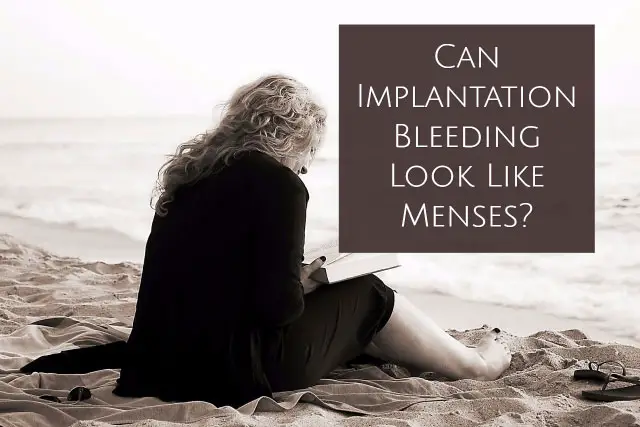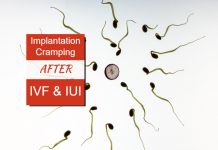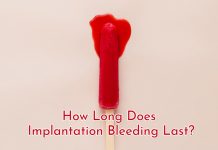Can implantation bleeding look like period? No, implantation bleeding and period are starkly different. Color, timing, quantity, consistency, and frequency of bleeding are different for IB and period. IB never looks like a period. If you see a period like bleeding then you may actually be having it. Pregnant women can get period until the third month of pregnancy.
Implantation bleeding can never look like menses. About one-third of women experience implantation bleeding during early pregnancy. Can Implantation Bleeding Look Like Period? If it did, there was no way to distinguish. One is a sign of pregnancy, and other occurs when you’re not pregnant.
A woman in reproductive age gets period every month. The ovaries release one egg every month, and it stays in the tubes for 24 hours.
If there are healthy sperms around and any one of them manages to fertilize the egg, then it leads to pregnancy. Otherwise, the egg loses its viability and the lining along with it come out of the vagina as period blood.

What is implantation bleeding?
Implantation bleeding is a symptom of the process of implantation. When the egg moves down the tubes and attaches to the lining of the uterus, some blood vessels crush. It leads to bleeding, and it may continue for a day or two. It can even last for a few minutes.
What is implantation hemorrhage? The embryo divides to form a 64 celled structure that requires space for attaching to the wall of the uterus causing the walls of endometrial blood capillaries to rupture. Implantation hemorrhage is the leaking of blood from these blood vessels.
Implantation bleeding mechanism is the result of the attack of the uterine lining by blastocyst. The layer surrounding the 64 units is sticky and has piercing ends that can digest the walls of blood vessels.
When the young embryo travels down the Fallopian tubes, it keeps on dividing, and the layer guides it to the right place for attachment. Later on, it attaches to the lining for deriving nourishment and for protection.
Leading signs of Implantation bleeding
How does implantation bleeding look? Implantation bleeding looks like spotting. There are no clots. It may be just a few drops or a few milliliters.
Implantation bleeding is rarely bright red. Mostly it is like old blood and is of brown or dark red color. The amount of blood is so less that it takes time to come off the uterus. By the time it comes out of vagina it loses all its oxygen.
Oxygenated hemoglobin makes blood look red. A period is a continuous flow, and so it appears red.
Other signs of implantation bleeding include:
- Mild cramping compared to severe menstrual cramps
- Nausea and headache
- Triphasic basal body temperature
- Spotting for a short period
Menstrual bleeding lasts for 5-6 days.
Why does implantation bleeding resemble your period?
Implantation bleeding might look like period if you have an actively bleeding area in the uterus. Under normal circumstances, implantation bleeding will not look like menses. One can miscalculate and consider period as implantation bleeding.
Most women consider any blood discharge from the vagina after sexual intercourse as implantation bleeding. Differentiating the two at this stage is difficult, and thus most women get it wrong.
Some women might not have regular cycles. In that case, if the period is early within 14 days from ovulation, she might consider it implantation bleeding. When the period starts, there is less flow and more cramping on the first day. By the end of the first day, the bleeding gets heavier.
Implantation bleeding may resemble a period during the first few hours. Later on, as the period flow gets heavy, the differences between the two become very visible. Implantation spotting is scanty and erratic. A period is a rapid blood flow that continues for long.
Implantation bleeding or period: How to tell them apart?
Differences between period and implantation bleeding are subtle in the beginning. But they soon develop individual characteristics.
A period goes on to become a constant flow and implantation bleeding stops. There may be clots in menses, but implantation spotting doesn’t have any. Take Implantation Bleeding Or Period Quiz to know the truth.
Differences between spotting and menstrual cycle: 7 indicators
1) Timing of bleeding
Implantation signs and symptoms start showing after 6-12 days after ovulation. The time of ovulation and conception differs by a few hours. Implantation occurs after six days from conception. If the egg doesn’t fertilize, then it comes out with vaginal lining as the period.
2) Duration of bleeding
Menses continue for at least 5-6 days. Implantation bleeding lasts for only two days at most. If it continues for more than three days, then it is not normal. Implantation spotting is random. A period is a continuous and heavy flow. There are clots and pieces of vaginal lining. There may be black clots of the dead-lining.
3) Intensity of bleeding
During implantation, spotting or bleeding of a few drops occurs randomly. Period, on the other hand, starts gradually leads to heavy flow and then again reduces to very minimal bleeding.
4) Other pregnancy signs
During implantation, you see many early pregnancy signs. These signs and symptoms include nausea, bloating, constipation and nasal congestion. PMS is more about cramps and mood swings. During the period you don’t experience breast tenderness.
5) Clots in blood
Implantation bleeding has typically no clots. The lining of the vagina is intact. So no clots come off. During menses, the entire lining breaks down and comes off. These are the clots of blood that you see on your pad.
6) Color of spotting or bleeding
Implantation bleeding is mostly brown or darker. Menses are like normal blood and are bright red. If your menses are dark, then you may be having some deficiency.
7) Pregnancy Test
You can further test by taking a pregnancy test. If you get a positive pregnancy test, then you are having implantation bleeding. Otherwise, it is a period’s blood flow.
Causes of early pregnancy bleeding other than implantation
- There are many causes of bleeding such as Ectopic pregnancy. In this case, the embryo implants in the tubes and starts dividing there. In severe cases, it can lead to bursting of tubes. It may be because of blockages or chromosomal abnormalities.
- Infections of the vagina can also cause bleeding. Inflammatory disease cause bleeding from the vagina.
- In some cancers, there is vaginal bleeding. Uterine cancers cause bleeding.
- Any jolt or heavy slosh can cause bleeding.
- Hormonal changes cause mid-cycle bleeding.




![Implantation Bleeding With Twins [How long does IB last with twins?] Implantation Bleeding With Twins](https://www.pregnanteve.com/wp-content/uploads/2019/01/implantation-bleeding-with-twins-218x150.jpg)





___123___Can Implantation Bleeding Look Like Period? Can You Mistake Menses For Implantation___123___
If u overlook the subtle differences between implantation bleeding and period, you may make the mistake.